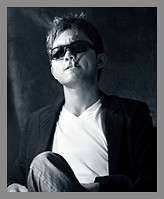 Cast: Asa Butterfield, David Thewlis, Vera Fermiga
Cast: Asa Butterfield, David Thewlis, Vera Fermiga
Director: Mark Herman
Screenplay: Mark Herman
Running time: 94 mins
Genre: Drama/History/Family
CRITIQUE
Films that tackle the Nazi systematic killing of 6 million Jews navigate the perilous waters of historical accuracy and tread the thin line between illustrative sensibility and melodrama. Claude Lanzmann, director of the renowned Holocaust documentary Shoah, once stated that “there are things that cannot and should not be represented”, a backlash targeted to Steven Spielberg’s Schindler’s List. This argument implies that any film touching this delicate subject is merely a partial version and that there will never be a definitive Holocaust film. Meanwhile, The Boy in the Striped Pyjamas, a recent addition to the Holocaust film canon, takes a different approach to the material, merging fable with fact, and in result creates fiction that masks a historical truth.
The real challenge of the film is how to tell the unimaginably horrific history of the Holocaust to a filmic language easily accessible by the younger generation. It is blatant that the target audience is the children demographic, since it has been distributed by Walt Disney, and since it revolves around a parable of a forbidden friendship between two children of different upbringing and race; one is a Nazi commandant’s son and the other a prisoned Jewish child. Adapted from the novel by John Boyne, Mark Herman’s narrative approach assumes the point-of-view of the main protagonist, Bruno, where his childhood exploration in a morally corrupted setting unbeknownst to him is seen and experienced through his eyes. The aim here is not authenticity but implicit imagery. There is very little of the terrifying events we know from newsreel footage that is shown here, where the imagery is metaphorical rather than upfront: a brief glimpse of the liquidation of ghettoes, a view of the so-called “farm” on a window, and a pungent smoke that rises in the air. Even the camera rarely penetrates the environment of the local Jewish camp, reminding the audience that this is Bruno’s story, not the people within, and the barbed-wire fence strongly signifies the limit to which the film can illustrate, and also stands for the theme’s division of race and classes. Where adults know the implication of these images, children will be left in curiosity.
Cinematographer Benoît Delhomme employs fluid camera movements and tints the picture with a slight golden hue, giving the film a dreamlike quality which consolidates the story’s fairy-tale approach. Long shots of around and within the large, stone countryside house are utilised to make the emotional subtext of the family living in it more reflective, and the use of spatial emptiness and walls as backgrounds in framing also denotes the distance and detachment of its characters. David Thewlis’ father, a patriarchal figure torn between family and nationalistic responsibility, and Vera Farmiga’s mother, who veers between passivity and moral awakening, are both oblivious to their own son’s exploits.
The finale, which applies cross-cutting editing, builds suspense and finally paving way to a long take of a chamber exterior that fades into black and silence. It is in this final shot where the film draws its most important point. That at the very core of this is a tale of childhood ravaged by war, and of innocence and friendship that knows no boundaries. History only serves as a backdrop, and this allegory stands for bigger moral questions about humanity and its evildoings.
VERDICT:
Forget authenticity. This is a moving, devastating portrait of childhood destroyed by war, and the power of innocence and friendship that knows no boundaries, race or differences. That haunting silence in the cinema when the credit rolls is a testament to the power of this allegory.
RATING: A-
Comments by IntenseDebate
Posting anonymously.
THE BOY IN THE STRIPED PYJAMAS [2008], Dir Mark Herman
2008-10-23T01:15:00+08:00
Janz
Movie Review|
Subscribe to:
Post Comments (Atom)
Followers
Blog Archive
- December (3)
- November (1)
- October (6)
- August (2)
- July (3)
- June (4)
- May (4)
- April (8)
- March (3)
- February (6)
- January (11)
- December (2)
- November (7)
- October (4)
- September (9)
- August (8)
- July (11)
- June (13)
- May (12)
- April (7)
- March (11)
- February (14)
- January (16)
- December (6)
- November (15)
- October (3)
- September (11)
- August (10)
- July (16)
- June (10)
- May (11)
- April (2)
- March (6)
- February (16)
- January (15)
- December (3)
- November (3)
- October (9)
- September (8)
- August (4)
- July (8)
- June (9)
- May (9)
- April (21)
- March (13)
- February (12)
- January (12)
- December (6)
- November (25)
- October (18)
- September (13)
- August (14)
- July (12)
- June (18)
- May (8)
 Logging you in...
Logging you in...






